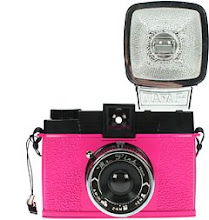
Antea was painted in the early 1530s by Girolamo Francesco Maria Mazzola, known as Parmigianino (1503–1540). This captivating painting is on view at The Frick through May 1. While there is no known evidence definitively linking the woman Parmigianino depicted to a specific person, her identity has been the cause of speculation for centuries.
Holland Cotter notes in his Times review of Antea: A Beautiful Artifice, that 'we enliven objects with our attention.' The bewitching Antea has captured mine. Truth be told, I'm most intrigued by her adornments and their composition — her gold satin dress, the marten fur, pearl drop earrings, ruby ring and gold chain; the lavish ruby and pearl jewel in her hair; her apron and the cuffs of her underdress decorated with delicate blackwork embroidery — not to mention that implausibly long right arm. I have returned again and again to dote on this Frick visitor; I hope to see her one more time before she leaves.

The woman in the painting was first identified as “Antea” in 1671 by the artist and writer Giacomo Barri, who claimed she was Parmigianino’s mistress. As Antea was the name of a famous sixteenth-century Roman courtesan, it was assumed that this was the woman to whom Barri referred. She has been identified alternatively as the daughter or servant of the artist; a member of an aristocratic northern Italian family; and a noble bride. It is most likely, however, that the Antea represents an ideal beauty, a popular genre of portraiture during the Renaissance. In such portraits, the beauty of the woman and the virtues she stood for were the primary subject, while the sitter’s identity — and even her existence — were of secondary importance.
More from Holland Cotter's review:
We know that the name “Antea” was attached to the picture only in the late 17th century, after the artist’s death. In classical mythology it referred to Aphrodite, the goddess of love. In the 16th century it was associated with a Roman courtesan of high renown, though there is no reason to think Parmigianino had either in mind.
Attempts have been made to determine the social status of his subject through a close reading of her sumptuous attire, though the results are contradictory. One scholar concludes that her apron indicates she was a servant, but another points out that noblewomen wore aprons too, fancy ones. Marten fur stoles like the one draped over the woman’s right shoulder were emblems of fertility, suggesting an identity as a young bride. But in other contexts the marten was a symbol of unbridled lust. The head of the animal preserved on the stole, its teeth as sharp as the fangs on a Japanese anime demon, looks rabid rather than nurturing.
In short, after much interpretive parsing and sorting, we know nothing at all about who this woman called Antea was, or what she meant to the artist, or to anyone else.
:parmigianino’s ‘antea’: a beautiful artifice is on view through may 1, frick collection.





















